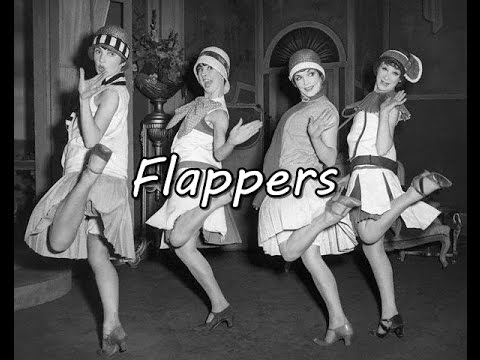Who Were The Flappers?

1920s America had so much going on. World War I had ended and the country was ushered into the era of prosperity and advancements. Cultural and technological inventions like insulin made lives longer for many people, while African American culture thrived during the Harlem Renaissance (a golden age of their literature, art, and music). However, the 1920s was also plagued by the Red Scare. It was inspired by the post World War fear of communism, which led to chaos as many innocent Americans being targeted.
This decade of the Roaring Twenties, a decade of change and chaos, is best represented by the women of that period. The women who embraced the new age and shed their old way of lives were called the Flappers. They were the modern women who refused to stick to the conservative Victorian ways of life and chose to follow their own desires / ideas and mingle in with the current popular culture. Interestingly, the term flapper was used in Great Britain to refer to a budding girl who was ‘flapping’ in life, as a fledgling. It was also used to mention a prostitute or a woman of loose character. Although the idea of Flapper was considered immoral in America, the word went on to describe those modern middle-class women, more as the portrayal of the progressive 20s.
The modern women-flappers-traded their long luscious hair for bob haircuts. They put on heavy makeup which was only associated with loose women at that time. They wore dresses which went above knees and had revealing necklines. Flappers ditched their corsets, so they could dance around easily. They often wound their breasts with clothes in order to achieve a boyish frame. They did not just alter their appearances, but began to indulge in activities which had previously been dedicated for men only. Flappers smoked and drank as much as their male counterparts did. They also danced in the Jazz in clubs, flirted openly with boys, and stayed out late at night. The new woman was bold and also did not hesitate to discuss her sexuality openly, or wait for her suitors, but dated whoever she liked.
But, not everyone liked this new woman. Flappers were looked down upon in the society as women who were living a frivolous and scandalous life. Many feminists and suffragettes did not like flappers. They regarded Flappers as superficial freedom activists and did not even consider them worthy of voting rights they had achieved. Flappers’ late night outings and dating any men they liked was viewed as simply an irresponsible and disgraceful behavior. Many employers fired women who cut their hair short. In fact, many states began to take action against flappers. Utah tried to pass a law pertaining to lengths of women’s skirts, while Virginia attempted to put a ban on any outfit which revealed the woman’s throat.
Although Flappers were a symbol of the girlish and youthful rebellion of the old-fashioned traditions of the previous generation, many feminists thought of the flappers as the birth of the era of liberated women, who would be more than just housewives. After World War I, many women had begun to work in industries and experienced independence along with the passage of a 19th Amendment which gave the women the right to vote. Thus, the Flappers were only an indication of imminent modern reforms in roles of women in the upcoming years, as many women became inspired to break away from the traditions.
